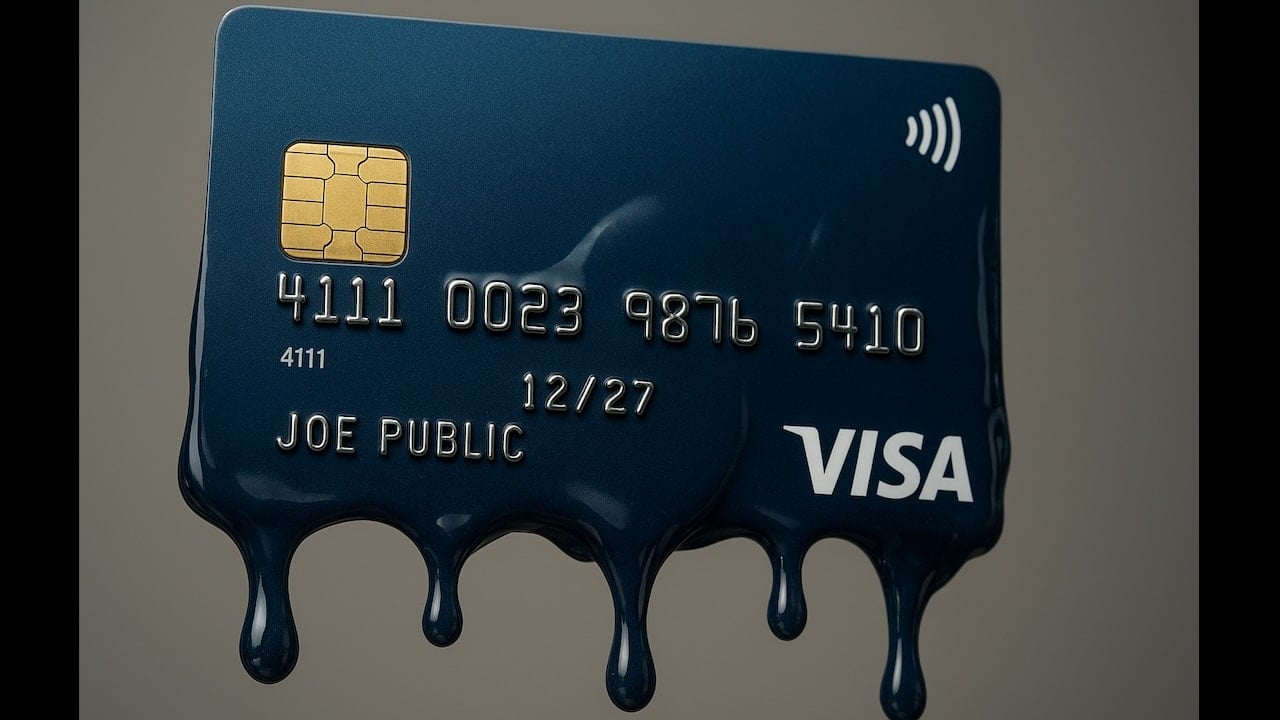(Mike Maharrey, Money Metals News Service) After unexpectedly surging in July, consumer debt returned to its previous trend and flatlined again in August, signaling growing financial stress on American households.
The growth of revolving debt, primarily reflecting credit card debt, has been slowing all year. It contracted in May and June, after a one-off surge in April, before suddenly surging once again in July. But in August, revolving debt contracted by 5.5 percent.
This trend of slower credit card spending may indicate that American consumers have maxed out their credit cards. This is bad news for an economy that depends on consumer spending to keep limping along.
Overall, consumer debt grew by around $400 million, a tepid 0.1 percent increase, according to the latest data from the Federal Reserve.
Americans are buried under $5.06 trillion in consumer debt.
The Federal Reserve consumer debt figures include credit card debt, student loans, and auto loans, but do not factor in mortgage debt. When you include mortgages, U.S. households are buried under a record level of debt. As of the end of Q1 2025, total household debt stood at $18.4 trillion.
Even with revolving credit contracting by over 5 percent, Americans still owe $1.31 trillion in revolving debt.
KPMG reported that the decline in credit card debt likely reflects a drop in borrowing and spending by the bottom 80 percent of U.S. households “that are increasingly stressed.”
“The top 20 percent now account for nearly two-thirds of all consumption. The top 3.3 percent have increased spending the most. Spending has stagnated, adjusting for inflation, among the bottom 80 percent.”
The double whammy of rising debt and interest rates exacerbates the debt problem. The average annual percentage rate (APR) currently stands at 20.03 percent, with some companies still charging rates as high as 28 percent. The average is only slightly down from the record high of 20.79 percent set last August, despite Fed rate cuts.
During the pandemic, Americans paid down their credit card balances and boosted their savings. But as price inflation gripped the economy in the wake of aggressive pandemic money printing and stimulus, Americans blew through their savings and turned to credit cards to make ends meet. Now, they’re paying the piper.
High debt levels have created elevated levels of consumer stress.
LegalShield’s Consumer Stress Index (CSLI) increased by 4.4 percent in the second quarter and was at the highest level since November 2020, when the economy was shut down during the pandemic.
The source of this stress: debt.
LegalShield spokesperson said, “As consumers take on more credit to keep up with inflation and everyday expenses, many are hitting a breaking point. The increase in legal inquiries tied to foreclosures and personal finance issues suggests that debt-fueled spending is no longer sustainable for a growing number of Americans.”
LegalShield’s Foreclosure Index surged 13.3 percent in Q2 and now stands nearly 29 percent higher than a year ago.
According to the New York Fed, aggregate delinquency rates remained elevated in the second quarter, with 4.4 percent of outstanding debt in some stage of delinquency.
Credit card delinquencies are rising, even among consumers with strong credit scores. According to VantageScore, there was a 47 percent year-on-year increase in late payments by people in the prime segment.
Tepid growth in non-revolving debt also signals consumer stress. Non-revolving credit, primarily reflecting outstanding auto loans, student loans, and loans for other big-ticket durable goods, grew by just $6.3 billion, a 2 percent increase.
This is generally in line with the tepid growth of around 2 percent in non-revolving credit over the last year, as consumers cut back on big-ticket spending to cover the increasing costs of day-to-day necessities.
Before the pandemic, revolving credit growth averaged 5 percent.
Borrowers are also struggling with their non-revolving loans – particularly their student debt. Seriously delinquent student loans surged to 10.2 percent in the second quarter as the government began requiring payments after years of forbearance in the wake of the pandemic.
Consumer stress is also evident in declining FICO scores.
The bottom line is that Americans have blown through the savings they accumulated during the pandemic and have run their credit cards close to the limit. An economy run on Visa and Mastercard simply isn’t sustainable. When Americans finally hit their credit limit, it will have major implications for economic growth.
Mike Maharrey is a journalist and market analyst for Money Metals with over a decade of experience in precious metals. He holds a BS in accounting from the University of Kentucky and a BA in journalism from the University of South Florida.

